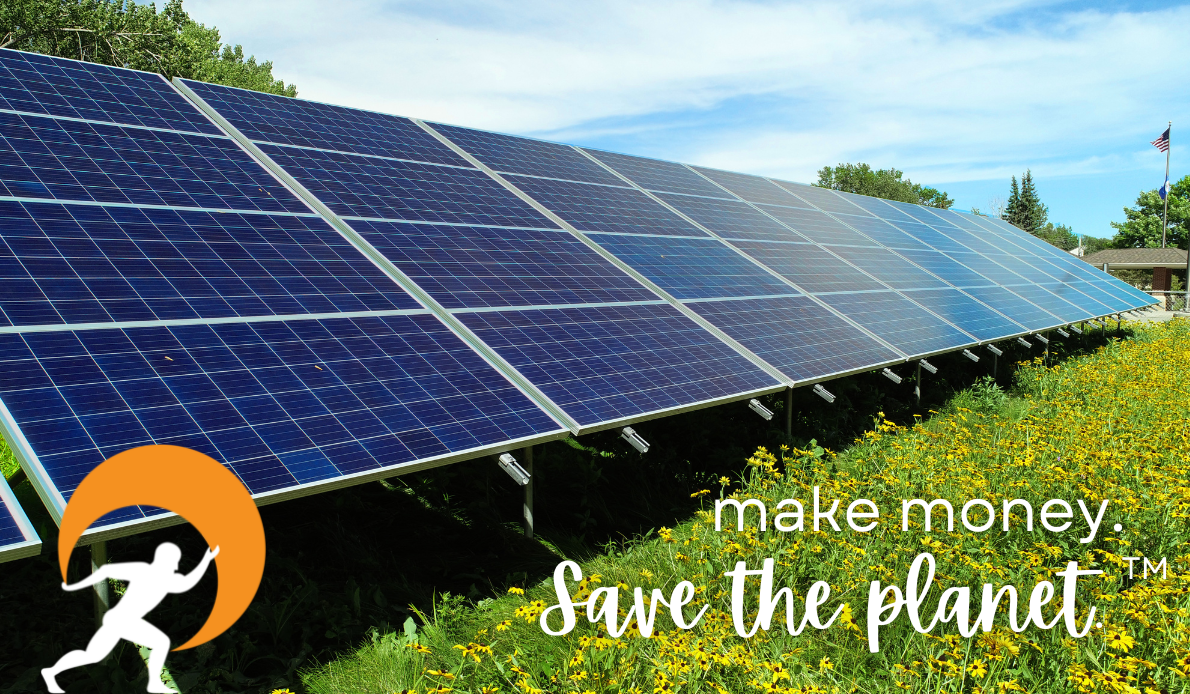The Irresistible Economic Logic of Commercial Solar
Whatever the environmental benefits, building owners aren’t going to install rooftop solar energy unless it makes good economic sense. With the cost of solar leveling out, the Inflation Recovery Act's extension of the 30% Federal ITC, and rising utility rates — the economic outcome for business owners has never been better.
Solar Makes Good Business Sense
Now more than ever, solar has become an attractive investment option that allows businesses to turn their roofs into income-generating assets. In this article, we’ll discuss the following topics describing the economics behind on-site solar arrays installed by businesses. We'll cover:
- How Solar Pays for Itself
- How Solar Hedges Against Rising Utility Rates & Inflation
- Solar Financing Options
1. How Solar Pays for Itself
Solar arrays are paid for by a combination of Energy Savings, Utility Incentives & Tax Benefits.
Energy Savings
A commercial rooftop solar array produces energy that directly powers the building offsetting the total Energy (kWh) that would otherwise need to be purchased by the utility at then current utility rates. A solar array also reduces the instantaneous amount of energy that is required to be provided by the utility (kW), reducing Demand Charges also billed at then current utility rates. Together, when combined with Utility Incentives & Tax Benefits, a solar array is paid for in ~4 years, and all the energy generated year ~4+ is provided for free providing a substantial direct benefit to a business’s bottom line.
Utility Incentives
Xcel Energy compensates customers for helping control the Utility's peak demand with a Tariff rider called the Solar PV Demand Credit. This Tariff is monetized in the form of a Demand Credit of $.07906 for each kilowatt-hour (kWh) generated by the solar array between 1 - 7 pm, or ~50% of the solar arrays output. The Demand Credit is provided as a credit on your utility bill and is applied against Demand Charges billed by the utility.
All projects greater than 40 and up to 1000kWAC are automatically eligible for the Solar PV Demand Credit.
Tax Benefits
Companies that install solar are eligible to receive both a 30% Federal Investment Tax Credit as well as Federal and State Depreciation.
The Federal Investment Tax Credit is a dollar-for-dollar one-time tax credit that can be carried forward up to 20 years and can also be used to amend your previous year’s taxes. Additionally, 85% of a solar arrays cost is eligible for 5-year depreciation under both Federal and State tax law. Under Federal tax law, you may depreciate 80% (BONUS) of the depreciable basis in 2023.
Together, these tax benefits pay for ~65% of the total cost of the solar project! If your business has a tax bill, instead of writing a check to the government, leverage your tax bill by installing an on-site solar array to produce a significant ROI is an absolute no-brainer.
2. Hedge Against Rising Utility Rates
Energy rates are on the rise due to supply and demand on both the local & global wholesale market, as well as upgrades to the aging grid infrastructure and rising fuel costs. As utility costs increase with inflation, the value of the energy provided by the solar array increases in kind, providing a natural hedge against the rise in utility expense.
To give some perspective on the recent rise of utility rates, on January 1, 2022, Xcel Energy implemented its interim rate increase raising commercial rates by 21.2% over the next 3 years. Minnesota Power increased their rates by 14% starting January 1 of 2022.
There’s no indication when electricity prices might stabilize, but locking in your utility rates in the present coupled with immediate and long-term expense savings makes sound business sense.
3. Solar Financing Options
A variety of financing options are available that can make a solar energy system affordable for Minnesota business owners.
Cash Purchase
When a business puts its available cash to use by purchasing an on-site solar array & monetizes the Utility Incentives and Tax Benefits, a solar array produces short returns, an incredible internal rate of return and 40 year expense savings that compound each year.
Financed Purchase
When a business uses financing to pay for its solar array & monetizes the Utility Incentives and Tax Benefits, a solar array produces positive cashflow every year.
PACE Purchase
PACE (Property Tax Assessed Financing) is a Federal Program that provides lending for solar arrays using a network of banks that are approved to work with the PACE Program. Instead of making monthly loan payments to the bank, payments are made bi-annually as an assessment added to the property tax bill. PACE loans can be amortized up to 15 years, do not require a personal guarantee, and provide an avenue for property owners to receive the cash benefits of a solar project upfront without leveraging their own capital or balance sheet.
The Bottom Line
However you choose to pay for your on-site solar array, the energy generated from it is essentially free once the solar array is paid off. Over the 40-year lifespan of a typical on-site solar array, the sustainable economic benefits are tremendous.
With historically rises in utility costs and our current economic pushing inflation to historic highs, now is the time to lock in these prime solar economics.
Contact iDEAL to learn more and discuss the right option for your business.
About iDEAL
We are developers, engineers, electricians, finance wizards, and O&M gurus.
Our solar A-Team has installed over 500 commercial systems with over 100+ projects under construction across multiple sectors including commercial for-profit businesses, schools, local governments, and non-profits. By marrying our technical expertise with a combination of tax incentives, utility grants, and multiple financing options, we provide cashflow positive projects from Day 1.
Share this
You May Also Like
These Related Stories

Solar Helps Cities Meet Sustainability Goals

Morrie’s Newly Constructed Jaguar Land Rover Dealership Goes Solar with iDEAL







No Comments Yet
Let us know what you think